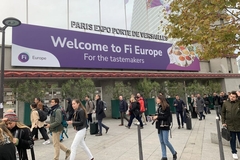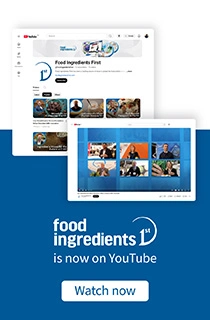
- Industry news
Industry news
- Category news
Category news
- Reports
- Key trends
- Multimedia
Multimedia
- Journal
- Events
- Suppliers
Suppliers
- Home
- Industry news
Industry news
- Category news
Category news
- Reports
- Key trends
- Multimedia
Multimedia
- Events
- Suppliers
Suppliers
New Blow Molders for PLA Bottles

The compostible bottles are produced by using preforms made of polylactide (PLA).
12/05/06 Lincoln, NE--Norland Int’l. Inc. introduces the first small-bottle blow molders capable of producing bottles from corn-based plastics for use by small to medium-sized bottled water operations. The compostible bottles are produced by using preforms made of polylactide (PLA), a 100% corn-based plastic developed by NatureWorksLLC, a wholly-owned Cargill company, Minnetonka, Minnesota.
PLA bottles look exactly like traditional PET bottles. What you can do
with PET, you can do with PLA.
Norland’s Freedom™ Series of small-bottle blow molders for PLA-based bottles can produce up to 4500 bottles per hour, depending on bottle size and blow molder model used. Water bottling companies that produce their own bottles can save up to 25% to 50% of their cost of bottles, compared to buying pre-blown bottles. The NatureWorksPLA® preforms are manufactured at NatureWorks’ plant in Blair, Nebraska.

The Norland blow molders, designed originally for blowing PET (petroleum-based) plastics, have been specifically adapted to handle the PLA plastics. Preforms made of PET and PLA have different characteristics. For PET, preforms must be preheated to 100 degrees C, while PLA preforms must be heated to just 75 degrees C.
PLA bottles offer a significant advantage to producers of bottled water, juices, oils and other liquid products—they are environmentally friendly. While it is estimated that petroleum-based plastic products require thousands of years to decompose, PLA products are compostible within 45-90 days. This compost material can then be used to fertilize the next year’s crop of corn, completing the cycle of a totally renewable resource. PLA plastics contain no petroleum, and require 20-50% less fossil fuel to create than PET plastics.
The steps for making PLA and PLA bottles:
1. Harvested corn is broken down to isolate corn sugar (dextrose).
2. The dextrose is processed into lactic acid.
3. The lactic acid is then made into PLA pellets, which are used to make preforms for bottles, as well as other types of packaging containers.
4. PLA preforms enter Norland’s Freedom™ blow molder, heated to the optimum temperature, then stretched by air pressure into the desired shape and size.
5. The new bottles exit the blow molder, cooling as they go.
6. They are filled with water, fruit juice, or other liquid products, and sold to consumers
7. The used bottles can then be composted* and used as fertilizer for growing more corn.
Norland’s Freedom Series blow molders can efficiently produce 1,500, 3,000 or 4,500 bottles per hour, depending on the model chosen. In addition to cutting bottle costs,
other important benefits include providing bottling companies the capability to produce their own bottles on-site as needed, saving inventory storage space and eliminating delivery problems; and ability to handle a variety of bottle preform shapes and sizes to 50 oz (1.5 L). Easy-to-change molds make moving from one bottle size or shape to another quick and easy.











